#Alexandria of Northumbria
Text
Vikings Oc
Evangeline, Princess of Wessex




gifs by @myrcella
Alexandra of Northumbria

gif by @anakintargaryens
#anne boleyn#the tudors#mary tudor#sarah bolger#natalie dormer#vikings#vikingsnetflix#northumbria#king ecbert#kingaelle#princess Evangeline of Wessex#Alexandria of Northumbria#ragnar lothbrok#bjorn ironside
147 notes
·
View notes
Text
Saints&Reading: Wed., May 27, 2020
Hieromartyr Therapon, Bishop of Sardis

The Hieromartyr Therapon, Bishop of Sardis suffered for Christ during the third century (the city of Sardis was in Lydia, Asia Minor). In fulfilling his priestly service, Saint Therapon enlightened many of the pagan Greeks with the light of the Christian Faith and baptized them. For this, he was brought to trial before the governor Julian and fearlessly declared himself a Christian bishop.
They threw him into prison, where he languished with hunger and thirst, and then they gave him over to cruel tortures. These torments did not break the saint’s valiant confession of faith. They led the saint off in chains to the city of Sinaion in Phrygia, and then to Ancyra.
In these cities they tortured him again. They took him to the River Astala, where they stretched him naked upon the ground, fastened to four stakes, and fiercely beat him. After this torture, they took the passion-bearer to the outskirts of the Satalia diocese, part of the Sardis metropolitanate, and here after long beatings Saint Therapon ended his martyric contest.
The stakes to which the saint had been tied, and which were soaked with his blood, put forth green shoots and grew into large trees, whose leaves were found to have curative powers. Many people received healing through them.
Source: Orthodox Chruch of America
Venerable Bede of Jarrow
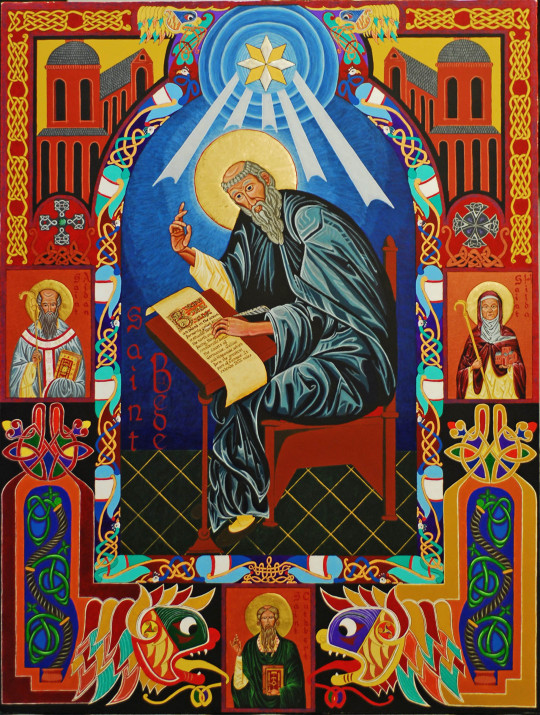
Saint Bede was a church historian who recorded the history of Christianity in England up to his own time. He was probably born around 673 in Northumbria. We do not know exactly where he was born, but it is likely that it was somewhere near Jarrow.
When he was seven, Bede was sent to Saint Benedict Biscop (January 12) at the monastery of Saint Peter at Wearmouth to be educated and raised. Then he was sent to the new monastery of Saint Paul founded at Jarrow in 682, where he remained until his death. There he was guided by the abbot Saint Ceolfrith (September 25), who succeeded Saint Benedict in 690, ruling both Wearmouth and Jarrow.
There is an incident in the anonymous Life of Ceolfrith which may refer to the young Bede. A plague swept through Ceolfrith’s monastery in 686, taking most of the monks who sang in the choir for the church services. Only the abbot and a young boy raised and educated by him remained. This young boy “is now a priest of the same monastery and commends the abbot’s admirable deeds both verbally and in writing to all who desire to learn them.”
Grieved by this catastrophe, Ceolfrith decided that they should sing the Psalms without antiphons, except at Matins and Vespers. After a week of this, he went back to chanting the antiphons in their proper place. With the help of the boy and the surviving monks, the services were performed with difficulty until other monks could be brought in and trained to sing.
Saint Bede was ordained as a deacon when he was nineteen, and to the holy priesthood at the age of thirty by Saint John of Beverley (May 7), the holy Bishop of Hexham (687), and later (705) of York. Bede had a great love for the church services, and believed that since the angels were present with the monks during the services, that he should also be there. “What if they do not find me among the brethren when they assemble? Will they not say, ‘Where is Bede?’
Bede began as a pupil of Saint Benedict Biscop, who had been a monk of the famous monastery at Lerins, and had founded monasteries himself. Saint Benedict had brought many books with him to England from Lerins and from other European monasteries. This library enabled Bede to write his own books, which include biblical commentary, ecclesiastical history, and hagiography.
Bede was not an objective historian. He is squarely on the Roman side in the debate with Celtic Christianity, for example. He was, however, fair and thorough. His books, derived from “ancient documents, from the traditions of our ancestors, and from my own personal knowledge” (Book V, 24) give us great insight into the religious and secular life of early Britain. To read Saint Bede is to enter a world shaped by spiritual traditions very similar to those cherished by Orthodox Christians. These saints engage in the same heroic asceticism shown by saints in the East, and their holiness fills us with love and admiration. Christians were expected to fast on Wednesdays and Fridays, and there was a forty day Nativity Fast (Book IV, 30)...keep reading
Acts 18: 22-18 NKJV
22 And when he had landed at Caesarea, and [g]gone up and greeted the church, he went down to Antioch. 23 After he had spent some time there, he departed and went over the region of Galatia and Phrygia [h]in order, strengthening all the disciples.
Ministry of Apollos
24 Now a certain Jew named Apollos, born at Alexandria, an eloquent man and mighty in the Scriptures, came to Ephesus. 25 This man had been instructed in the way of the Lord; and being fervent in spirit, he spoke and taught accurately the things of the Lord, though he knew only the baptism of John. 26 So he began to speak boldly in the synagogue. When Aquila and Priscilla heard him, they took him aside and explained to him the way of God more accurately. 27 And when he desired to cross to Achaia, the brethren wrote, exhorting the disciples to receive him; and when he arrived, he greatly helped those who had believed through grace; 28 for he vigorously refuted the Jews publicly, showing from the Scriptures that Jesus is the Christ.
Footnotes
Acts 18:5 Or in his spirit or in the Spirit
Acts 18:7 NU Titius Justus
Acts 18:12 Gr. bema
Acts 18:17 NU they all
Acts 18:18 Lit. many days
Acts 18:21 NU omits I must by all means keep this coming feast in Jerusalem
Acts 18:22 To Jerusalem
Acts 18:23 successively
John 12: 36-47 NKJV
36 While you have the light, believe in the light, that you may become sons of light.” These things Jesus spoke, and departed, and was hidden from them.
Who Has Believed Our Report?
37 But although He had done so many signs before them, they did not believe in Him, 38 that the word of Isaiah the prophet might be fulfilled, which he spoke:
“Lord, who has believed our report?
And to whom has the arm of the Lord been revealed?”
39 Therefore they could not believe, because Isaiah said again:
40 “He has blinded their eyes and hardened their hearts,
Lest they should see with their eyes,
Lest they should understand with their hearts and turn,
So that I should heal them.”
41 These things Isaiah said [a]when he saw His glory and spoke of Him.
Walk in the Light
42 Nevertheless even among the rulers many believed in Him, but because of the Pharisees they did not confess Him, lest they should be put out of the synagogue; 43 for they loved the praise of men more than the praise of God.
44 Then Jesus cried out and said, “He who believes in Me, believes not in Me but in Him who sent Me. 45 And he who sees Me sees Him who sent Me. 46 I have come as a light into the world, that whoever believes in Me should not abide in darkness. 47 And if anyone hears My words and does not [b]believe, I do not judge him; for I did not come to judge the world but to save the world.
Footnotes
John 12:41 NU because
John 12:47 NU keep them
1 note
·
View note
Photo

Madonna with St Oswald of Northumbria and St Catharine of Alexandria; c. 1410-1420; Baden-Württemberg, Germany
73 notes
·
View notes
Text
281J Early 15th century Homiliary
{Homiliarius doctorum qui omiliarius dici solet … Hieronymi Augustini, Ambrosii, Jo. Chrysostomi, Gregorii, Origenis, Bede et complures ..}?
St Augustine (354- 430), John Christomos (349-407) St Benedict , Pope Leo I(440-61) ( and others)
For this collection of Homilies, who was the editor is not certain, and while traditionally it is attributed to Paul the Deacon approximately 720-799 There is also supposition that it was collected by Alcuin or even Bede.
What we do know is that the production of
Homiliary began in the 780s when Charlemagne (742/743–814) appointed Paul the Deacon to compose a Homiliary. Charlemagne,” has been represented as the sponsor or even creator of medieval education, and the Carolingian renaissance has been represented as the renewal of Western culture. This renaissance, however, built on earlier episcopal and monastic developments, and, although Charlemagne did help to ensure the survival of scholarly traditions in a relatively bleak and rude age, there was nothing like the general advance in education that occurred
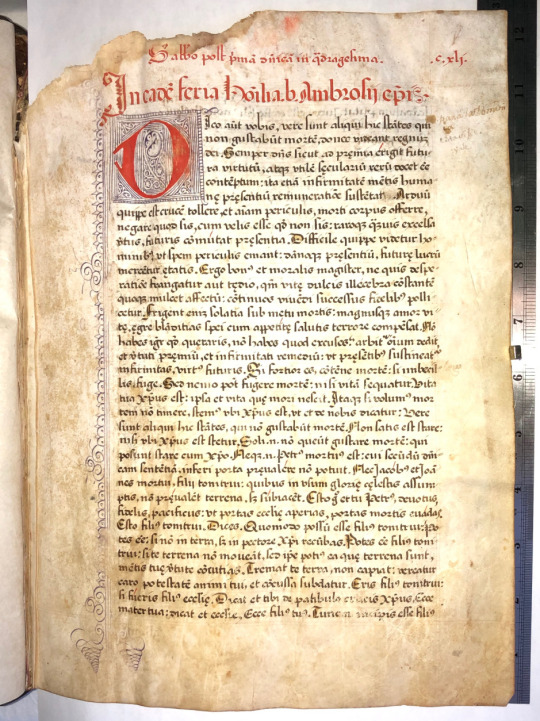
later with the cultural awakening of the 11th and 12th centuries. Learning, nonetheless, had no more ardent friend than Charlemagne, who came to the Frankish throne in 768 distressed to find extremely poor education systems” [EB] “Charlemagne stands out as the personification of everything that is unselfish and noble, a conqueror who visualized himself as the champion of European unity with the purpose of saving Europe through imperial conquest—an evangelist with a sword. As it turns out, Charlemagne did see himself as the Conqueror of everything pagan and heterodox and the divinely destined builder of Augustine’s City of God—of “one God, one emperor, one pope, one city of God.”[2] It was as if Charlemagne consciously sought to fulfill Plato’s vision of the ideal philosopher king. After all, Europe badly needed a conquering strong man like David of old, who could exercise wisdom and discernment in the sustainment of God’s new Jerusalem on earth.” [Gregory W. Hamilton ;http://nrla.com/charlemagne-and-the-vision-of-a-christian-empire/]N
So, We do know that ” From a very early time the Homilies of the Fathers were in high esteem, and were read in connection with the recitation of the Divine Office. That the custom was as old as the sixth century we know since St. Gregory the Great refers to it, and St. Benedict mentions it in his rule (Pierre Batiffol, History of the Roman Breviary, 107). This was particularly true of the homilies of Pope St. Leo I, very terse and peculiarly suited to liturgical purposesThis particular Homilarium Begins [folio cxli] with Ambrose (340-397) Homilies for the Quadragesima (forty days of Lent -Yes lent is longer than 40 days even though there are more 40 days from Ash Wednesday to Easter. ( counting the days of Lent excluding its Sundays and the Sacred Triduum, which technically is a separate sacred time.) This takes up to folio 224 (cclxxiiii). Following St Ambrose who has iv sermons in this section are sermons by Origen, Bede , John Chrystosom Cyrill , Augustine , Peter Chrysologus Archbishop of Ravenna , Alcuin of York .

After the Quadragesima series begins the Homilies for The Passion of Christ (Holy Week) On Palm Sunday, Jesus and his disciples spent the night in Bethany, a town about two miles east of Jerusalem. This is where Lazarus, whom Jesus had raised from the dead, and his two sisters, Mary and Martha lived. They were close friends of Jesus, and probably hosted Him and His disciples during their final days in Jerusalem.

This section (folios 141-245 )of Homilies begins at Quadragesima see above.
Then Holy Week/Passione homilies occupy folios 246-312.
Augustine of Hippo (13 November 354 – 28 August 430 AD) ,Gregory (3 September 590 to 12 March 604 AD) , Pope Leo (440-416 AD), Chrystomos (347–407)
Next in course is Palm Sunday “Dominica in ramis palmarum folios 313-337
Abbot Bernard (1090-1153), Pope Leo (440–461), Cyprian (200-258) , Chrystomos(347-407) Ambrose: (c339-397)
The final leaf is Easter Saturday (Sabbato sancto pasche)

Probably the first 140 leaves made up Homiletic commentaries on the Old Testament: the Hexaemeron (Six Days of Creation); De Helia et ieiunio (On Elijah and Fasting); De Iacob et vita beata (On Jacob and the Happy Life); De Abraham; De Cain et Abel; De Ioseph (Joseph); De Isaac vel anima (On Isaac, or The Soul); De Noe (Noah); De interpellatione Iob et David (On the Prayer of Job and David); De patriarchis (On the Patriarchs); De Tobia (Tobit); Explanatio psalmorum (Explanation of the Psalms); Explanatio symboli (Commentary on the Symbol).
Saint Augustine:

Peter Chrysologus:
(c. 380 – c. 450) Archbishop of Ravenna, approximately 400-450 , The earliest printed work by Chrysologus is 1575 Insigne et pervetvstvm opvs homiliarum.He is known as the “Doctor of Homilies” for the concise but theologically rich reflections he delivered during his time as the Bishop of Ravenna. His surviving works offer eloquent testimony to the Church’s traditional beliefs about Mary’s perpetual virginity, the penitential value of Lent, Christ’s Eucharistic presence, and the primacy of St. Peter and his successors in the Church. Few details of St. Peter Chrysologus’ biography are known. He was born in the Italian town of Imola in either the late fourth or early fifth century, but sources differ as to whether this occurred around 380 or as late as 406.
John Chrystosom

Beyond Chrstostoms preaching, the other lasting legacy of John is his influence on Christian liturgy. Two of his writings are particularly notable. He harmonized the liturgical life of the Church by revising the prayers and rubrics of the Divine Liturgy, or celebration of the Holy Eucharist. To this day, Eastern Orthodox and Eastern Catholic Churches of the Byzantine Rite typically celebrate the Divine Liturgy of Saint John Chrysostom as the normal Eucharistic liturgy, although his exact connection with it remains a matter of debate among experts.
Saint Cyrill.

Cyril’s jurisdiction over Jerusalem was expressly confirmed by the First Council of Constantinople (381), at which he was present. At that council he voted for acceptance of the term homoousios,(“consubstantial” this term was later also applied to the Holy Spirit in order to designate it as being “same in essence” with the Father and the Son. Those notions became cornerstones of theology in Nicene Christianity, and also represent one of the most important theological concepts within the Trinitarian doctrinal understanding of God) having been finally convinced that there was no better alternative. Cyril’s writings are filled with the loving and forgiving nature of God which was somewhat uncommon during his time period. Cyril fills his writings with great lines of the healing power of forgiveness and the Holy Spirit, like “The Spirit comes gently and makes himself known by his fragrance. He is not felt as a burden for God is light, very light. Rays of light and knowledge stream before him as the Spirit approaches. The Spirit comes with the tenderness of a true friend to save, to heal, to teach, to counsel, to strengthen and to console”. Cyril himself followed God’s message of forgiveness many times throughout his life. This is most clearly seen in his two major exiles where Cyril was disgraced and forced to leave his position and his people behind. He never wrote or showed any ill will towards those who wronged him. Cyril stressed the themes of healing and regeneration in his catechesis. the well-known Catechetical Lectures of St. Cyril of Jerusalem, to explain them to the catechumens during the latter part of Lent
Holy God, you gather the whole universe
into your radiant presence and continually reveal your Son as our Savior.
Bring healing to all wounds,
make whole all that is broken,
speak truth to all illusion,
and shed light in every darkness,
that all creation will see your glory and know your Christ. Amen.

St. Gregory the Great (ca. 540-604).

Alcuin of York : Flaccus Albinus Alcuinus; c. 735 – 19 May 804 AD)—also called Ealhwine, Alhwin or Alchoin—was an English scholar, clergyman, poet and teacher from York, Northumbria. He was born around 735 and became the student of Archbishop Ecgbert at York. At the invitation of Charlemagne, he was a leading scholar and teacher at the Carolingian court, where he remained a figure in the 780s and ’90s.

Alcuin wrote many theological and dogmatic treatises, as well as a few grammatical works and a number of poems. He was made Abbot of Tours in 796, where he remained until his death. “The most learned man anywhere to be found”, according to Einhard‘s Life of Charlemagne (ca. 817-833), he is considered among the most important architects of the Carolingian Renaissance. Among his pupils were many of the dominant intellectuals of the Carolingian era

Origen :Origen of Alexandria ( c. 184 – c. 253)

Origen, most modest of writers, hardly ever alludes to himself in his own works; but Eusebius has devoted to him almost the entire sixth book of “Ecclesiastical History”. Eusebius was thoroughly acquainted with the life of his hero; he had collected a hundred of his letters; in collaboration with the martyr Pamphilus he had composed the “Apology for Origen”; he dwelt at Caesarea where Origen’s library was preserved, and where his memory still lingered; if at times he may be thought somewhat partial, he is undoubtedly well informed. We find some details also in the “Farewell Address” of St. Gregory Thaumaturgus to his master, in the controversies of St. Jerome and Rufinus, in St. Epiphanius (Haeres., LXIV), and in Photius (Biblioth. Cod. 118).
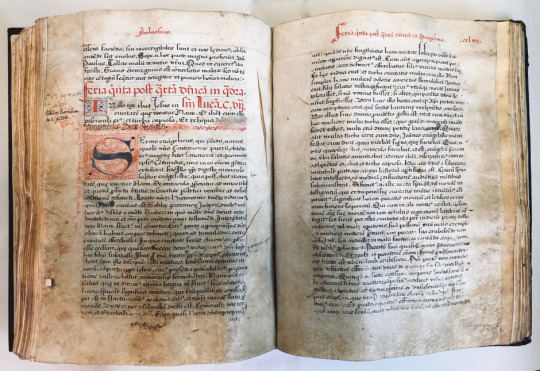
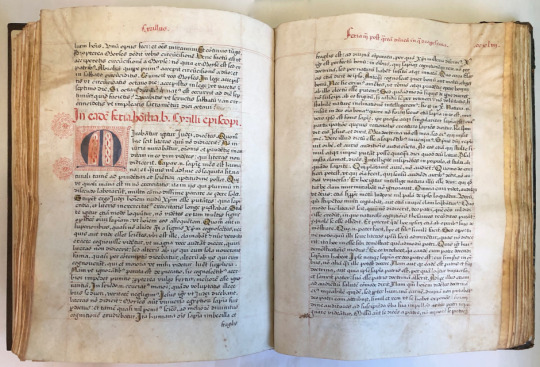


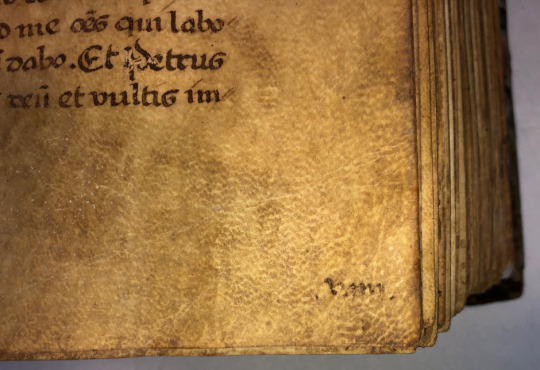
An early fifteenth century manuscript Homiliary 281J Early 15th century Homiliary {Homiliarius doctorum qui omiliarius dici solet ... Hieronymi Augustini, Ambrosii, Jo. Chrysostomi, Gregorii, Origenis, Bede et complures ..}?
#Alcuin#Charlemagne#early 15th century#Homilies#Medieval manuscript#medieval philosophy#St Ambrose#St Augustine#St Bernard#Venerable Bede
0 notes